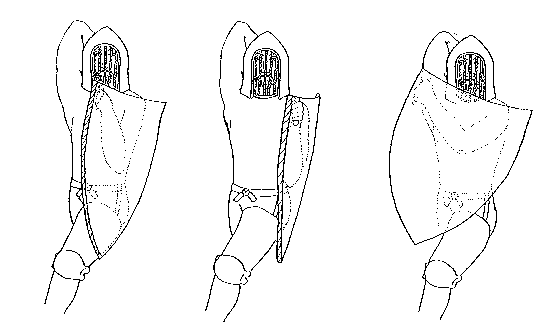|
|
|
To my way of thinking, defense is more difficult than offense because a much larger number of variables and decisions are involved. Offense happens when you decide to launch an attack and ends when you disengage (move to C). Defense (like rust) never sleeps.
Approaches to defense are infinite. Some schools rely on punch blocking everything reactively. Some styles ratchet down both offense and defense to a startlingly finite number of pieces. Standing still with a large shield and blocking with your sword while throwing only two or three blows at Mach 4 will win an awful lot of fights. But to me that seems insuperably dull. Besides I can do these things neither physically nor emotionally.
Defense is a lot of things. It is the gathering of information on your opponents by watching them closely (See Chapter 11) and the mastery of basic fighting skills. It is being able to place your shield where you need it reliably. It is being in stance correctly. It is moving correctly. It is deciding what to do as your opponent begins his attack. It is also, alas, the analysis of defensive failure.
Within a moment or two of losing a fight, work out in your own mind what happened. You may be right. You may be wrong. If you are unsure, get a friend to reenact the sequence of events. Once you know what happened, do what you must to solve the problem.
Essentially, defense has many different components: your movement, his movement, your offense, and your reaction to his offense among many others. Unfortunately all these things happen simultaneously and constantly. This is why the most important work of defense starts in D.
In most places, there are only two or three main styles of sword fighting and people with wildly different styles become well-known quickly. Learn to recognize styles by the way they carry their equipment. Like a football quarterback recognizing defenses from their alignment, the sword and shield fighter must learn to recognize various schools from the way its proponents are in stance and how they hold their shields and swords. Knowing what to expect makes reacting far easier.
Let's take the case of the young enthusiastic fellow who runs straight and full out at the words, "lay on." As he comes charging at me, I check my stance. When I anticipate that he has moved the line between B and C to me, I step toward my shieldside. Sometimes he stops confused. In which case, I advance to the B/A line, and throw a blow while moving to my swordside.
If he keeps coming, I throw the vertical return blow at the top of his helm as he crosses B/A. If his forward movement is stopped by my blow (usually), then I take a largish swordside step into A and attack his leg or head. This particular position occurs quite frequently and seems to break a couple of my rules. It does. Knowing when to break rules is a function of having rules at all. The primary rule it breaks is the "Never open up" rule.

Now back to our enthusiastic young fighter . . . he's still standing and throwing blows. I watch a spot a couple of inches above the elbow. By keying on that spot I determine whether he's throwing a blow and, if he is, what general target it's aimed at. Precision is his problem. I only move my shield to four places, remember? I need to determine which block to use and I do that when "the spot" commits itself to a direction.
Typically, each time he throws a blow he moves his feet. He either swings his swordside foot or his shieldside foot forward. This movement will expose targets to exploit. As I initiate offense, I choose where my defense is strongest now and step to that position.
If he moves neither foot, either I step to improve my position (Standing in A, I want to go deeper on the swordside in A; standing in B, I'll go either further to the shieldside or to A.) or I might retreat to reconsider my options.
If his offense is very good, I will throw the "crushing blow" through the center to break up his pattern. I never stay in one place for three of my opponent's blows. I also never let my opponent throw three unanswered blows. Standing in front of your opponent lets him perfect his pell technique. Most fighters are very good against a pell.
As a defensive technique, I throw a blow at my opponent whenever either of us enters or retreats. The transition game (crossing C/B and B/A) is where most fights end. There are several ways of thinking about transitions. There is the "big transition" from disengagement to engagement and the "small transition" from offense (putting all your might into throwing a blow) to defense (oh yeah, I got to block). A fighter's defense is weakest the moment after throwing a blow. Let his return pull a blow from you. Follow his return with your hand.
Defense is the result of moving correctly, reacting with proper shieldwork, throwing blows correctly, and returning to stance correctly.
At the back of this book is an Owner's Manual Troubleshooting Chart
for fighters. It covers the most frequent problems which beginners encounter.
Continue to Chapter 10